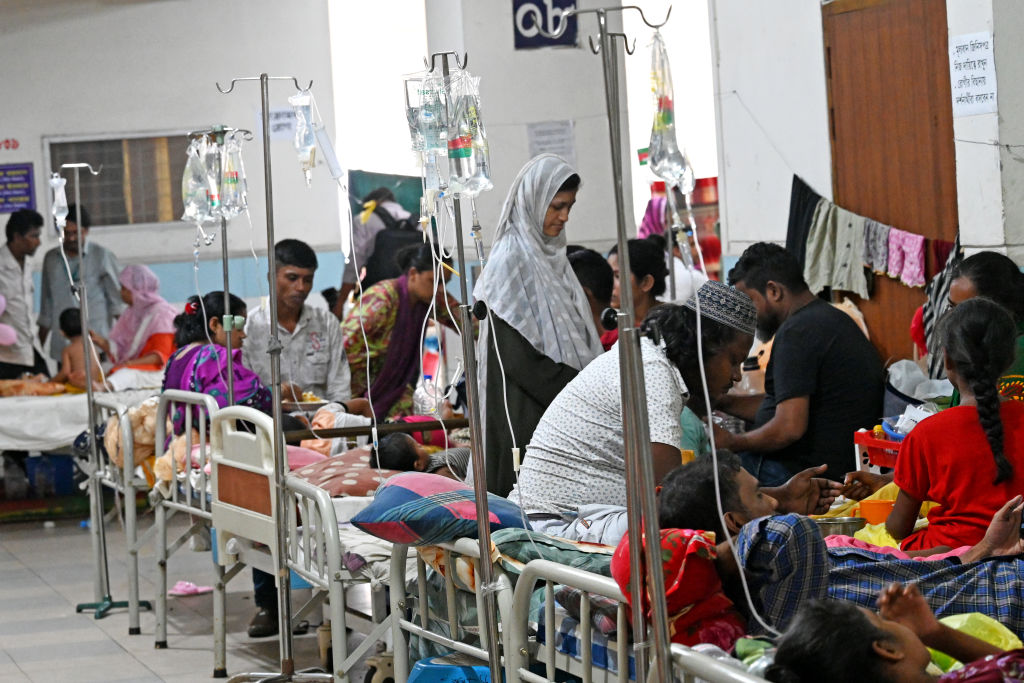Obesity is on the rise in rural communities worldwide

All over the world, technology is improving. Cars, running water, electricity, and other modern conveniences are spreading to more and more communities — and these changes bring a lot of benefits. But there are also some disadvantages, as one new study found.
The study, published in Nature on Wednesday, showed that people in rural areas contribute significantly to the global rise in obesity. While "the prevailing belief" is that urban areas are hotbeds for weight gain and sedentary habits, The Verge reported, the truth is that more than 55 percent of the rise in obesity from 1985 to 2017 came from rural areas.
Much of the rise has come from places with "emerging economies," The Verge explained, such as Latin America, Asia, and the Middle East. While rural communities in developed countries have long had high obesity rates, the rest of the world is, unfortunately, catching up.
The Week
Escape your echo chamber. Get the facts behind the news, plus analysis from multiple perspectives.

Sign up for The Week's Free Newsletters
From our morning news briefing to a weekly Good News Newsletter, get the best of The Week delivered directly to your inbox.
From our morning news briefing to a weekly Good News Newsletter, get the best of The Week delivered directly to your inbox.
This data supports the changing of initiatives for global health. In addition to addressing issues like malnutrition, scientists are calling for a shift in attention to high-quality of food and the importance of exercise. "We have to think outside the box a little," said Sherry Pagoto, a professor of health sciences at the University of Connecticut. Obesity initiatives, instead of trying to apply the same methods worldwide, should be tailored to the needs of the community, whether urban or rural, she argues. Learn more at The Verge.
A free daily email with the biggest news stories of the day – and the best features from TheWeek.com
Shivani is the editorial assistant at TheWeek.com and has previously written for StreetEasy and Mic.com. A graduate of the physics and journalism departments at NYU, Shivani currently lives in Brooklyn and spends free time cooking, watching TV, and taking too many selfies.
-
 Nobody seems surprised Wagner's Prigozhin died under suspicious circumstances
Nobody seems surprised Wagner's Prigozhin died under suspicious circumstancesSpeed Read
-
 Western mountain climbers allegedly left Pakistani porter to die on K2
Western mountain climbers allegedly left Pakistani porter to die on K2Speed Read
-
 'Circular saw blades' divide controversial Rio Grande buoys installed by Texas governor
'Circular saw blades' divide controversial Rio Grande buoys installed by Texas governorSpeed Read
-
 Los Angeles city workers stage 1-day walkout over labor conditions
Los Angeles city workers stage 1-day walkout over labor conditionsSpeed Read
-
 Mega Millions jackpot climbs to an estimated $1.55 billion
Mega Millions jackpot climbs to an estimated $1.55 billionSpeed Read
-
 Bangladesh dealing with worst dengue fever outbreak on record
Bangladesh dealing with worst dengue fever outbreak on recordSpeed Read
-
 Glacial outburst flooding in Juneau destroys homes
Glacial outburst flooding in Juneau destroys homesSpeed Read
-
 Scotland seeking 'monster hunters' to search for fabled Loch Ness creature
Scotland seeking 'monster hunters' to search for fabled Loch Ness creatureSpeed Read


